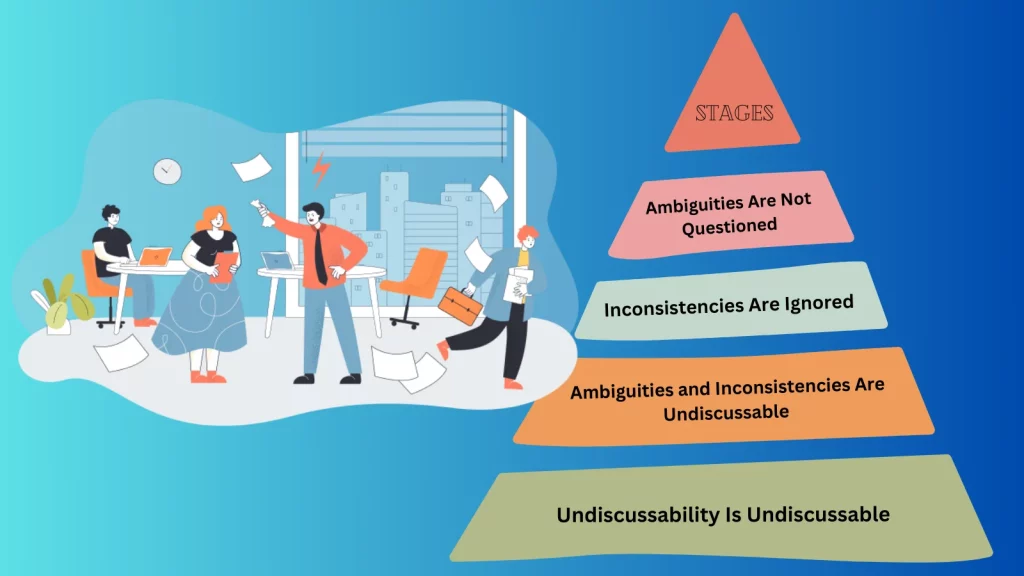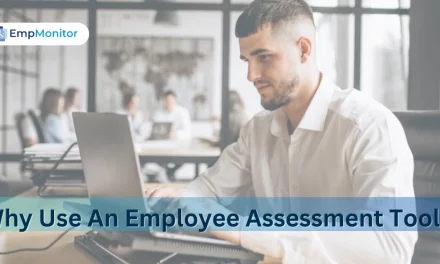In today’s competitive job market, many employees find themselves working in an environment that may not be ideal. Dysfunctional workplaces can be toxic, frustrating, demoralizing, and challenging to take care of.
A Dysfunctional workforce is a slow burn. It often starts when a few people’s unproductive attitudes and habits slowly spread to their colleagues around them. Then, a growing group of employees starts to lose confidence, loyalty, and the desire to work together for a common purpose. Eventually, the unhealthy environment can affect almost everyone, and the entire team can start to get off-track.
However, with the right tips and strategies, it’s possible to survive and grow in such an environment.
LISTEN TO THE BLOG NOW!
Why Does Workplace Dysfunction Happen?
Before we dive into the solution, let’s understand what makes a dysfunctional workplace.
Workplace dysfunctional can happen for various reasons, and while it may show several symptoms, the root cause often includes:-
Poor management: A dysfunctional workplace can result in ineffective leadership that creates unwanted barriers. The workforce might feel indecisive about taking the initiative if they fear unpredictable reactions or punitive measures.
A leader who is inconsistent, unapproachable, or overtly authoritarian can foster a culture of mistrust and dissatisfaction. Coworkers may be less likely to collaborate or communicate effectively, and misunderstandings and problems can arise.
Lack Of Communication:- One of the prevailing issues is the inconsistent flow of information. Inadequate communication can create misunderstanding and mistrust among employees.
It can lead to disagreement and errors in judgement or action, which may be costly for the organization.
Team Issues:- A dysfunctional workplace often forms when individuals are put together without proper guidance or support and a clear direction. It can become unproductive and challenging to work with.
Employee disengagement can be infectious. When others see a colleague putting in the bare minimum without results, it can demotivate them, leading to a general fall in energy and morale.
Office Politics:- Office politics or people pursuing their interests over the teams can create a toxic environment and delay collaboration and productivity.
Similarly, favouritism adds to divisions and creates tension. Employees who feel unobserved or undervalued due to favouritism might not give their best performance.
These problems can be solved in various ways, but recognizing these issues is the first step in addressing and resolving workplace dysfunction.
Stages Of Dysfunctional Workplace
Stage I. Ambiguities Are Not Questioned
In this initial stage, a newly issued directive may be clarified in one way or another. Two managers understand the aim differently and give conflicting instructions to their teams.
Employees tend not to question or seek clarification when faced with unclear or ambiguous information. Despite this, waiting for someone in a position of authority to clarify, otherwise it can lead to misunderstanding and confusion.
Stage II. Inconsistencies Are Ignored
As dysfunction progresses, inconsistencies in the workplace, such as contradictory messages or policies, are often ignored or tolerated.
Disciplined employees finally speak out against management, addressing the consistent lateness of new employees. However, when they voice their concerns, management dismisses them, claiming to look into the issue and advising them to mind their own business. Unfortunately, the situation remains unchanged, potentially destroying trust and causing more confusion.
Stage III. Ambiguities and Inconsistencies Are Undiscussable
Sometimes staff do not openly discuss their genuine problems and hesitate to discuss them in front of management, which allows dysfunction to remain unchecked, and then uncertainty and inconsistencies become undiscussable topics.
During employee meetings, silence not only suggests the absence of problems but also signals an unspoken code regarding management’s actions to address these issues.
Stage IV. Undiscussability Is Undiscussable
In the final stage, in response to a critical drop in productivity, a morale survey is conducted. The findings show that employee confidence and job satisfaction have decreased.
The genuine act of discussing or addressing workplace issues becomes merely impossible. This extreme level of dysfunction can lead to a toxic work culture where open communication is stifled, and problems remain unresolved.
Recognizing these stages is vital for addressing a dysfunctional workplace early before it reaches a more severe and damaging environment.
Turning Dysfunctional Into Productivity: 5 Pro Tips
Turning a dysfunctional workplace into a productive one is a challenging but attainable goal. Here are five pro tips to help you in this transformation:-
Set Clear Goals And Expectations:- Define clear goals and expectations and job roles for employees. When everyone knows what is expected of them, it reduces uncertainty and confusion, which is a common source of dysfunction.
Open Communication And Transparency:- Boost open and honest communication. Create an environment where employees feel safe discussing concerns, suggesting improvement, and giving feedback. Transparency can help address issues quickly and build trust.
Modern workplaces have enough tools designed to streamline communication. Whether it’s employee management system tools like EmpMonitor, picking the right tool can ensure everyone stays informed.
Effective Leadership And Management:- Strong leadership is essential for resolving workplace dysfunction. Ensure that managers have the skills to lead and manage the team effectively, address leadership issues promptly, and provide training.
Such programs can cover a scope of topics from effective communication and conflict settlement to understanding team dynamics and the psychology of inspiration.
Conflict Resolution Strategies:- Implement effective conflict resolution strategies. Train employees and managers on how to address and resolve conflict productively. Address interpersonal issues before they climb.
Foster Team Building And Morale:– The team organized activities and programs to enhance morale, strengthen team relationships, and reduce barriers. When employees are happy and engaged, they collaborate more productively.
By keeping in mind these tips, you can begin the journey of transforming a toxic workplace into a productive and harmonious one. Managers have started opting for EmpMonitor, employee monitoring software to track employees’ productivity and provide solutions to the wellness challenges for employees.
How Insightful Employee Monitoring Software Helps To Handle Dysfunctional Workplace
One of the impactful software to track employee productivity is EmpMonitor, which can be a game changer in handling dysfunctional workplace. It helps tackle common issues found in many organizations, which can harm the productivity and morale of the employees.
Here are some features of the EmpMonitor tool that make a difference:-
Streamlined Data Management And Integration:-
This feature of EmpMonitor makes sure that data handling is super easy. It’s easy to operate and hold all data in one central place.
The smooth connection with data helps employees, facilitating better decision-making and improving productivity.
Real-Time Monitoring & Activity Tracking:-
Insightful computer monitoring lets managers see what employees are doing in the system in real-time. The software automatically starts tracking time as soon as employees turn on their system and which website and app employees use the most. Managers can monitor workers’ activity levels and observe active and idle time. The dashboard further shows how productive the team is over time.
Continuous Development & Customization:-
This feature of EmpMonitor makes it easy for managers to organize and understand productivity metrics. It can be adjusted to fit the specific needs of each workplace, making it more flexible. You can shape the tool to match the unique work environment.
Employee Feedback:-
This software enables the collection of employee feedback, offering an understanding of workplace issues and concerns that require attention.
This feature of EmpMonitor helps organizations track the challenges commonly faced with dysfunctional workplaces and ensure a harmonious, productive, and dynamic workplace for all.
READ MORE:
Creating Workplace 2.0 – What Employee Monitoring Has For You In 2023
What It Is To Feel Like Work Burnout? Learn How To Cope With It.
Wrapping Up
A dysfunctional workplace can be challenging, but it’s not a cut-off. Remember, there’s something valuable to learn even in the workplace. If you have to spend little time in a dysfunctional environment, treat it as an opportunity for personal growth and be gentle until it’s in the rearview mirror.
By understanding the characteristics of dysfunction, you can take proactive steps, transform the workplace for the better, and create a space where employees feel valued, safe, and motivated. It is quite evident, that due to these challenges, most organizations are implementing monitoring solutions, and by 2024, most organizations will monitor employees in the future.
If you’re looking to streamline communication and track the idle time of employees in your organization, consider EmpMonitor employee monitoring software, which is designed to simplify employee communication and project management and ensure an engaged team at all times.












